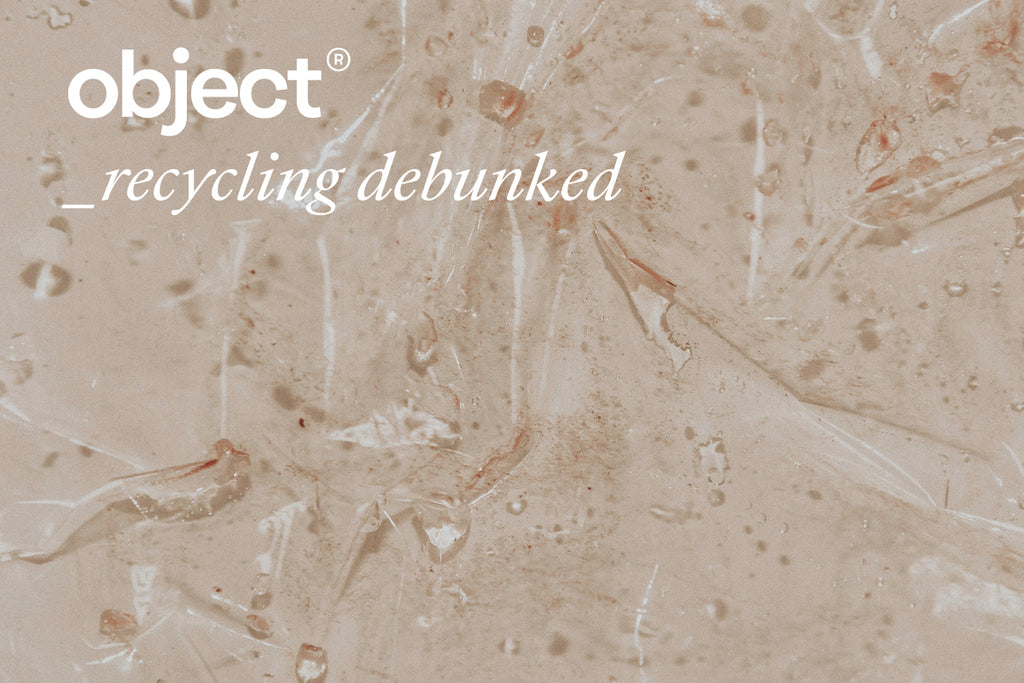Most of us sort our rubbish, put it in with the rest of the recycling waste and hope for the best.
We decided to find out what actually happens to our waste after we throw it away.
Our recycling is picked up and taken to a local facility which sorts the waste into its constituent parts. For example; cardboard, aluminium cans and plastic bottles are separated.
Once sorted, the waste that can be recycled is compressed and stacked and then most of it is sold to recycling facilities abroad to be processed and converted into materials that can be re-used.
However, a large proportion of items that we put into our recycling bins can’t be recycled, even if the packaging displays a recycling logo. This may be because the local recycling facility doesn’t have the required machinery / technology to recycle a particular material or because the packaging may be contaminated by food waste. As a result, facilities in the UK will separate most waste and send it to landfill.
Once sorted and compressed, most recyclable waste is sent to the developing world where it’s processed and sold to manufacturers to be re-used. Contaminated waste or materials that can’t be recycled are often burnt or dumped near the recycling facilities, eventually finding their way into rivers and oceans.
For the last 50 years, nearly 75% of all recycling has been sent to China to be processed. However, in January 2018 China banned 24 types of waste from entering the country, arguing that what was coming in was too contaminated and therefore a large percentage could not be recycled. Since then, other South East Asian countries have been taking some of the recycling that China rejects and the environmental impact on those countries has been immense. The situation has further deteriorated as thousands of illegal and unregulated recycling plants have opened in the region to deal with the overflow from China.
The other key effect of the Chinese ban is that many western countries are having to send materials that could otherwise be recycled to landfill because there is no global capacity to pick up China’s slack.
The powerful Netflix documentary Broken shows the plight of villagers in Malaysia that live near illegal recycling plants, it paints a depressing picture. The burning waste causes respiratory diseases and the incidence of cancer has skyrocketed in local communities. Waste that isn’t recycled or burnt is dumped in the natural environment and contaminates rivers and seas, destroying wildlife and causing serious health issues for anyone that lives nearby.
There are different statistics depending where you look, however, a 2017 study in the Science Advances Journal stated that of the 8.3 billion metric tons of plastic that had been produced up to that point in time, 6.3 billion metric tons had become plastic waste, over 75%. Of that, only 9 percent had been recycled which means that a whopping 91% of plastic waste wasn’t recycled.
The percentage for other types of recycled waste varies but the key point to note is that of the materials that we think we are recycling, only a small proportion is actually recycled, the vast majority is burnt or ends up in landfill or in the natural environment in places like Malaysia.
We’ve been taught that recycling works but the statistics paint a different picture.
Some argue that the plastic industry has intentionally misled us into thinking that recycling is effective so that recycling is turned into a "guilt eraser" and we don’t reduce the use of single use plastics - we’ll leave you to make your mind up on that.
What is certain is that the oil and petrochemical industries have a vested interest in maintaining and indeed increasing plastic production and they are formidable, well-funded opponents in the fight against plastic waste.
It’s interesting to note that the Resin Identification Code (RIC) system (the recycling symbols numbered 1 to 7 that you see on plastic packaging) were created by the plastics industry in 1988 and it is those same symbols that mislead many into thinking that plastic packaging is recyclable when often it’s not.
We believe that it’s important to understand that whilst we contribute to the issue, the solution does not rest solely, or even mainly, on our shoulders. Even if we recycle more effectively and use less plastic, the problem won’t be solved as long as plastic production continues to increase.
Real change must come from politicians, political parties and big business and so in our opinion that is where we should be focusing our attention.
At object we do our bit by saying no to plastic altogether. We've created a range of beauty essentials that are 100% plastic free. What's more, the packaging for our solid shampoo bars, cleansing bars and conditioner bars is made from up to 50% recycled cotton from the clothing industry. It's recyclable, home compostable and biodegradable.


leave a comment, we'd love to hear from you